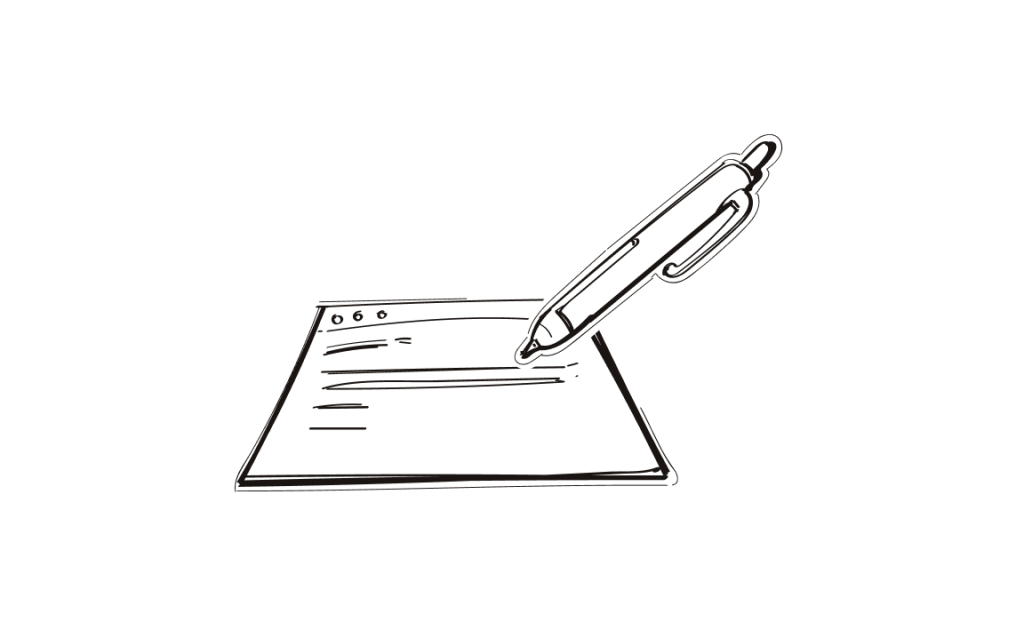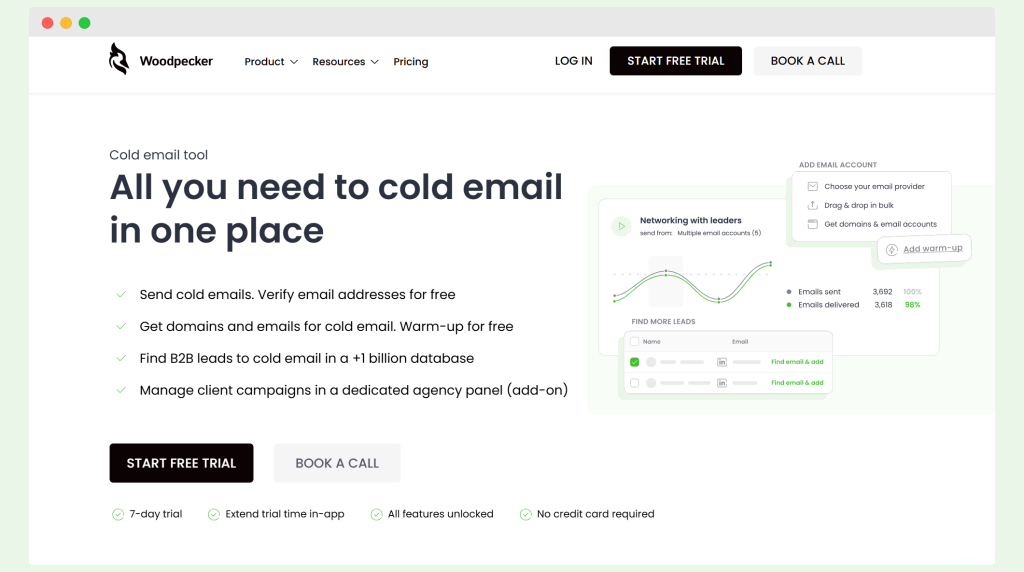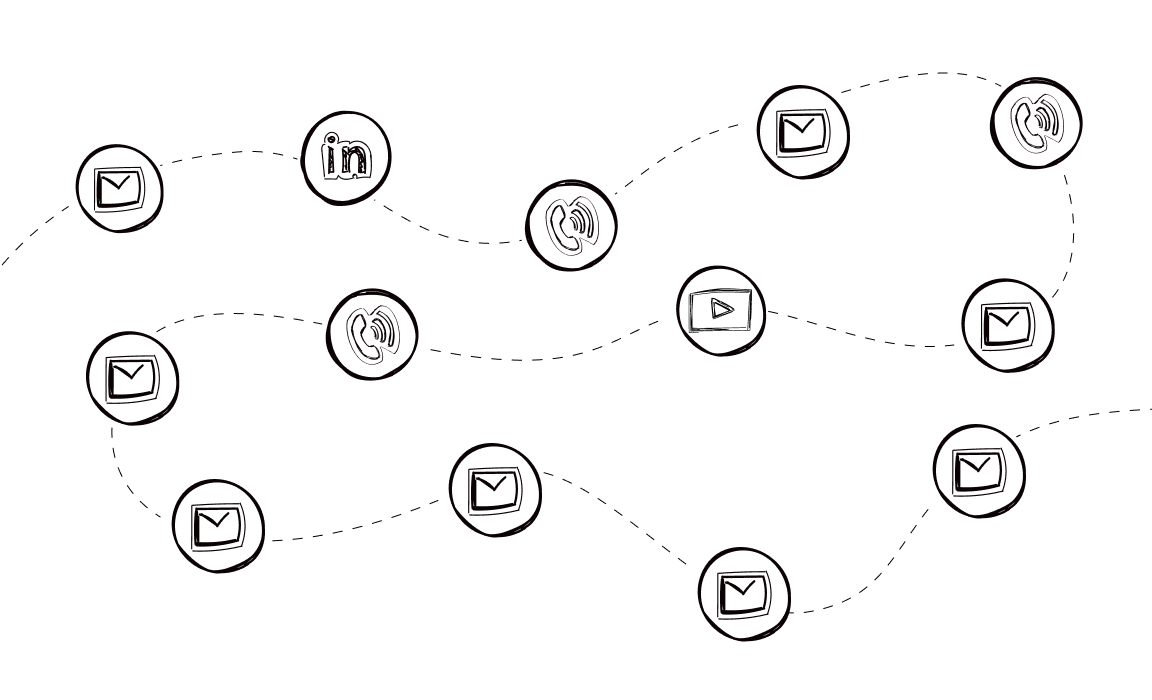Struggling to get responses from your outreach?
Most emails get ignored — not because of your offer but your approach.
An outreach sequence isn’t a random batch of emails sent to cyberspace. It’s a well-thought-out plan to connect with your prospects at the right time and in the right way.
To make your sequences work, follow our best practices that turn cold leads into new customers for your business.
Let’s break down the key practices that will make 2025 your year for meaningful connections.
What is an email outreach sequence?
An email outreach sequence is a step-by-step plan to connect with potential customers through a series of emails. It helps sales teams stay organized and continue the conversation with prospects.
👉 For example, imagine a software company reaching out to marketing managers. Their outreach sequence could start with an email offering a free case study, followed by a follow-up highlighting how their tool solves specific industry challenges, and then a personalized demo invitation to build trust and engagement.
Outreach sequences often use different communication channels, combining emails, phone calls, and even social media to reach people where they’re most active. Their goal is to create amazing cold emails that convert and engage audiences from the start.
To make it work, you need to do more than just send a series of emails. You need to plan it strategically.
Here are the best practices to make outreach sequences profitable.
#1 Define clear goals
Before sending a single email, decide what you want to achieve. Are you aiming for lead generation, nurturing prospects, or booking demos? Knowing your goal keeps your sequences focused and makes crafting messages that drive results easier. You can use the SMART method.
#2 Personalize your emails
Personalization makes your outreach sequences stand out in a crowded inbox. Tailored emails are more likely to catch your prospects’ attention and spark meaningful conversations.

And Woodpecker can help you with that. It is a cold email platform that offers AI-powered tool features. With its OpenAI integration, Woodpecker helps your sales team create hyper-personalized emails based on available fields in your CRM and other key criteria.
The AI email writing assistant generates content that aligns with your tone of voice and adapts to each prospect’s details, so you avoid sounding generic or impersonal.

Here’s how Woodpecker makes personalization effortless:
- CRM integration: Pulls data like names, company details, and industry specifics to customize emails.
- AI writing assistant: Generates email content tailored to your goals, whether it’s lead generation or booking demos.
- Custom fields (snippets): Easily add personalized details to your emails.
- Multichannel approach: Ensures consistency across email, phone, and social platforms to engage prospects on multiple fronts.
#3 Create a good sequence structure
A great message can fall flat without the right structure. Even the most interested prospect might lose focus if your outreach sequence isn’t formatted for readability.
Here’s why structure matters: a clear flow makes it easy for your sales team to guide prospects through an outreach process, ensuring every message feels logical and purposeful.
#4 Write a strong introduction email
Your introduction email is the bait that sets the tone for the entire outreach. It must spark interest, drive engagement, and leave your prospects wanting more. Without a compelling start, even the best outreach sequences risk being ignored.
✔️ WOODPECKER BOOST: Personalize the message using Woodpecker’s snippets or CRM data. A tailored email will stand out in a crowded inbox.
Check out the templates for introduction emails.
#5 Use 5-7 total emails per sequence
Sending 5-7 emails in an outreach campaign is the sweet spot. Why? A shorter sequence risks being forgotten, while an overly long one risks fatiguing your prospects.
Our analysis of over 20 million sales emails shows that campaigns with 4-7 emails in a sequence achieve a 27% reply rate—three times higher than sequences with just 1-3 emails.

Data-driven best practices based on our cold email research:
- Personalize every email: Campaigns with advanced personalization can achieve a 17% reply rate, compared to 7% for generic emails.
- Space out your follow-ups: Avoid sending emails at the same time daily; vary the timing to avoid seeming pushy.
- Target smaller, well-defined groups: Narrow targeting results in higher conversion rates.
👉 Read more about how many cold emails to send in a day.
#6 Write engaging subject lines
A great subject line works like the first line of a story. It triggers curiosity and drives engagement, pulling your prospects deeper into the buyer’s journey. Even the most valuable email risks being ignored without a compelling subject line.
- Be clear and concise. Prospects decide whether to open your email in seconds. Keep subject lines short and to the point.
- Add personalization. Use names, industries, or other specific details to make your message feel relevant.
- Create curiosity. Phrases like “Have you considered this for your team?” encourage recipients to click.
- Avoid spammy words. Overusing words like “free” or “limited-time offer” can hurt your deliverability.
- Test and refine. A/B testing subject lines helps uncover what resonates most with your audience.
✔️ WOODPECKER BOOST: Woodpecker integrates AI to make crafting subject lines fast and effective. Its OpenAI-powered writing assistant generates an optimized subject line based on your prompts, ensuring they’re clear, relevant, and aligned with the buyer’s journey.
With Woodpecker, you can focus less on brainstorming and more on starting meaningful conversations.
#7 Focus on value first
Trying to sell right off the bat? That’s a quick way to lose your prospect’s interest. A good outreach strategy starts with value, not a pitch. Build rapport by offering something useful. It shows your prospects that you’re more interested in helping than just closing a deal.
How to do it right?
➡️ Share free assets. Link to tools or content your prospect can use immediately, like templates, industry reports, or guides.
➡️ Use a comment variable wisely. Customize your outreach by referencing how the asset solves a specific challenge they might face.
➡️ Avoid hard-selling. Let the focus be on helping, not pushing for a sale. This builds rapport and sets the stage for future discussions.
#8 Use a conversational tone
A conversational tone makes your emails approachable and easy to read, which increases the likelihood of a contact response. Instead of sounding robotic or overly formal, talk like you would to a friend — clear, simple, and engaging.
How? Keep messages short. Nobody wants to read a novel in their inbox. Short, concise messages are easier to digest. Also, write like you speak. Imagine explaining your value proposition in a casual chat. Use a similar tone in your outreach.
#9 A/B test your emails and sequences
You’ll see what resonates most with your audience by testing different elements, like subject lines, content style, length, or types of personalization.
Woodpecker simplifies the A/B testing process so you can focus on results. Here’s how it helps:
- Create multiple versions. In just a few clicks, add different versions of your email with variations in elements like subject lines or call-to-actions.
- Automated sending. Woodpecker’s algorithm shuffles email versions, sending them to randomly chosen, equally sized groups of prospects. This ensures fair comparisons and accurate data.
- Analyze results. View performance metrics on your dashboard. The winning version is clearly marked, so you can easily identify which approach worked best.
#10 Automate your sequences
Manually sending email sequences one by one? Hardly anyone does that anymore. Tools like Woodpecker let you schedule email sequences and set automated flows for specific actions, like replies or clicks, ensuring that no opportunity slips through the cracks.
Woodpecker works seamlessly by mimicking human behavior to ensure deliverability. It spaces out your emails with randomized intervals and sends follow-ups automatically based on your defined schedule. Even better, you can create conditional flows that adapt if a prospect replies or engages, letting you focus on strategy rather than tedious manual tasks.
#11 Respect timing and frequency
Too many emails can overwhelm prospects, making you seem pushy, while too few might leave them uninterested. As mentioned, campaigns with 4-7 emails in a sequence achieve a 27% reply rate — three times higher than campaigns with just 1-3 emails. But sending too many follow-ups or flooding their inbox at odd hours? That’s a quick way to land in the spam folder.
#12 Include a clear call to action
Even the most engaged prospects can lose interest or move on without a specific next step. Your CTA should make it easy for recipients to know exactly what you want them to do — and why it matters to them.
To make your CTAs strong:
- Keep it concise and action-oriented.
- Align it with the prospect’s needs or interests.
- Make the next step simple and easy to take.
Examples of effective CTAs:
- Can we schedule a quick 15-minute call to discuss how this could fit your team?
- Click here to access the free case study and see how others solved this challenge.
- Reply with a time that works for you, and I’ll set it up.
- Take a look at this tool and let me know what you think!
- Would you like a personalized demo? Just let me know, and I’ll arrange it.
#13 Track and optimize
Tracking performance shows you who opened your emails, clicked on links, or replied, providing critical insights into what’s working and what’s not. Woodpecker makes tracking seamless with built-in tools that monitor open rates, reply rates, and other key metrics.

Using an invisible tracking pixel, Woodpecker records when a recipient opens your email and displays this data in your campaign dashboard.
This feature helps you evaluate the impact of elements like subject lines and the first few sentences of your email. Additionally, you can set conditions to adjust follow-ups based on whether a prospect has opened or clicked through your message.
☑️ Our tracking pixel is based on HTTPS. So your messages will get delivered even to the most protected inboxes.

Optimization doesn’t stop at tracking. Analyze your data regularly, test new strategies, and refine your sequences to align better with your audience. A well-tracked campaign not only boosts engagement but also uncovers insights to make your outreach more effective over time.
📃 Learn more about writing cold emails – check out our six-step tutorial.
Send email outreach sequences like a pro
A great outreach sequence doesn’t happen by accident. It’s built with structure, strategy, and the right tools. To create connections, stick to proven methods, like crafting engaging subject lines and automating follow-ups.
Want to simplify the process? Tools like Woodpecker streamline your efforts, giving you more time to focus on building relationships.
Start your Woodpecker journey today!

